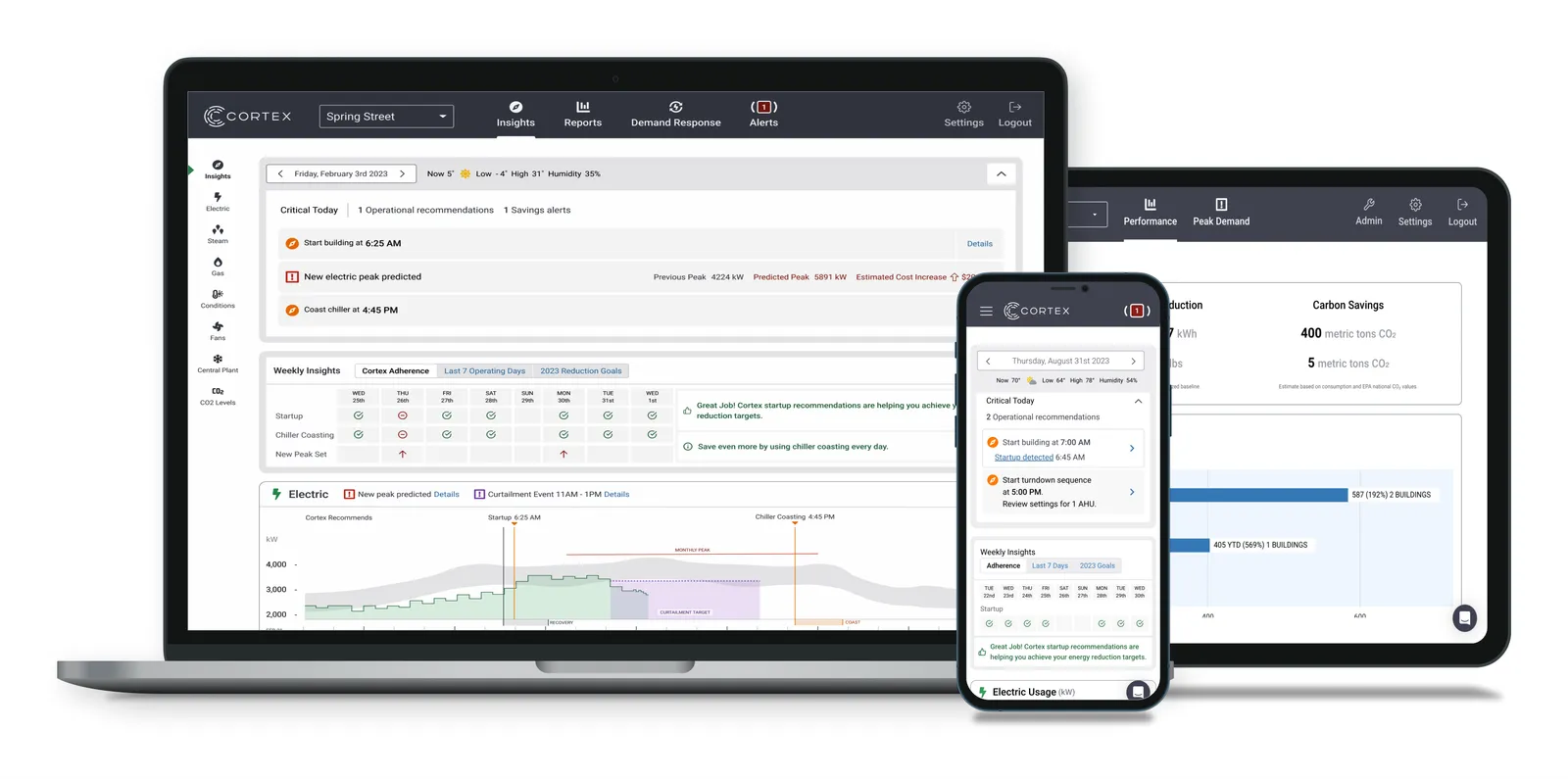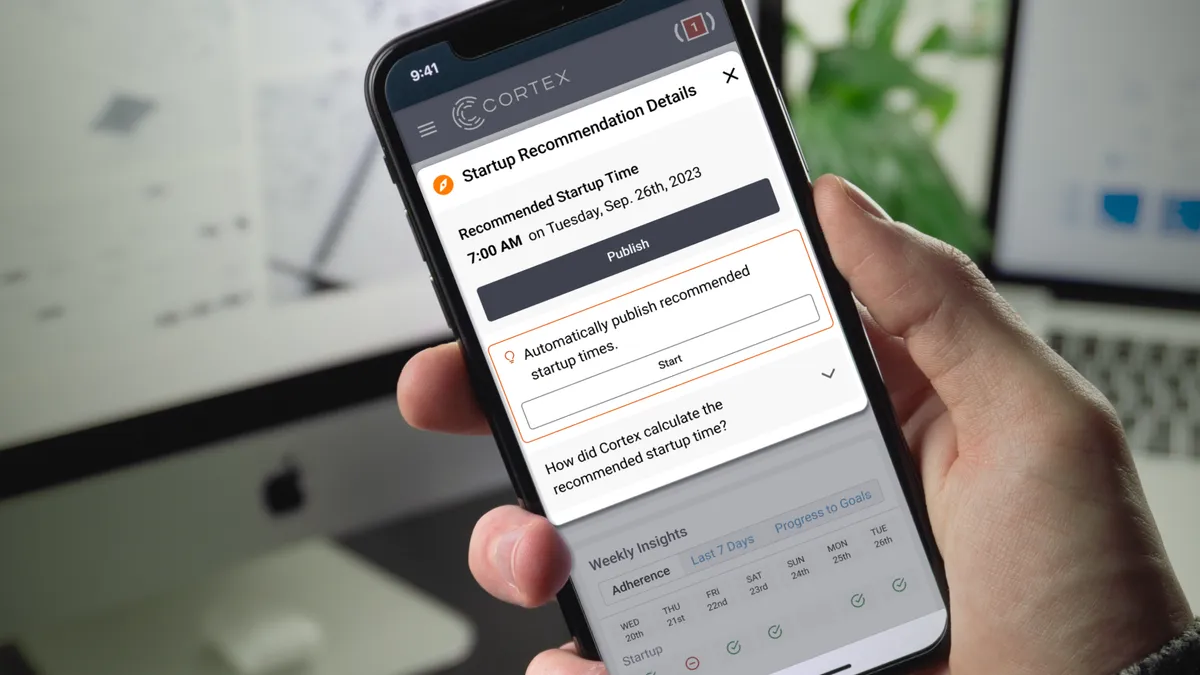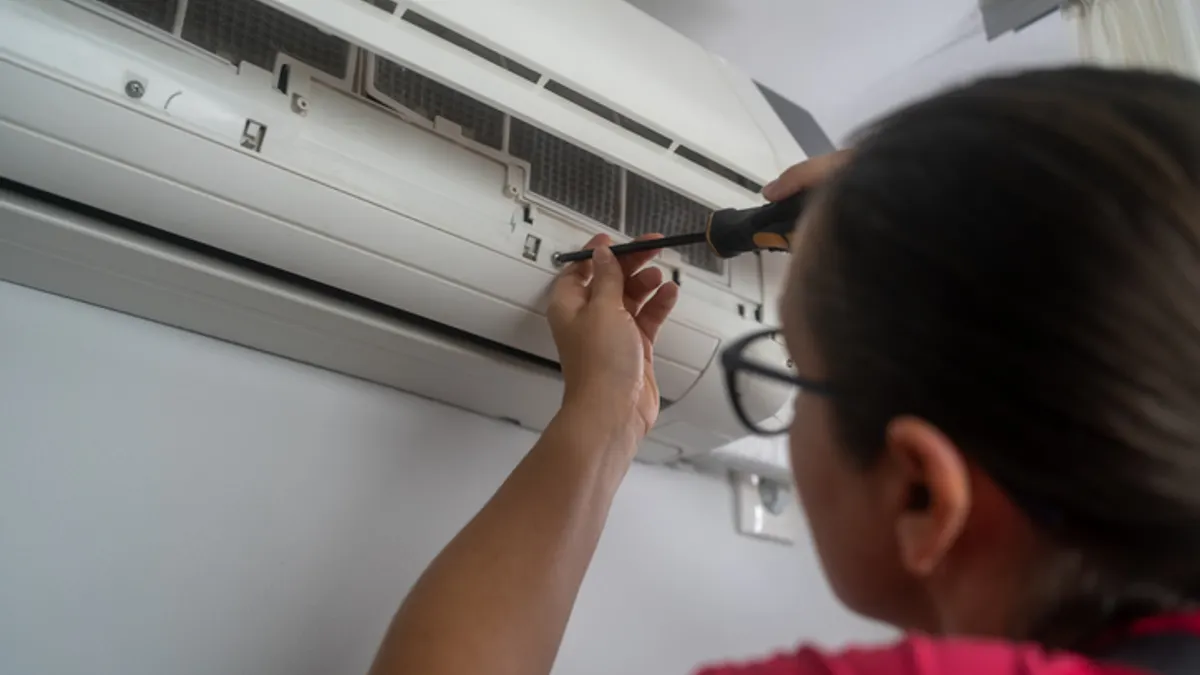Dive Brief:
- Cortex Sustainability Intelligence is rolling out an AI-powered automation feature aimed at helping building engineers cut energy usage and carbon emissions.
- Cortex Push eliminates the need for time-consuming building management system configuration procedures, the company said in a news release sent to Facilities Dive.
- Deploying energy efficiency best practices can cut energy usage by as much as 11% across clients’ commercial real estate portfolio, and Push will further that objective, Owen Glubiak, vice president of revenue at Cortex, said in an interview.
Dive Insight:
Manual operational protocols and increasingly intricate building management requirements, coupled with stringent regulations, have paved the way for automation to further energy efficiency improvements and carbon emission reductions.
The U.S. Department of Energy points to the effectiveness of a strategy called re-tuning in generating energy savings ranging from 5% to 25% across federal sites. The DOE defines re-tuning as a systematic process of identifying and rectifying operational inefficiencies in buildings by using automation system controls to minimize energy consumption, subsequently enhancing occupant comfort at no-cost or low-cost.
“We’re taking [those insights] and trying to operationalize them to enable better and easier deployment of best practice strategies, using AI to do so,” Glubiak said. He pointed to the potential of Cortex Push to drive energy reductions across the company’s client sites, which he noted has already seen an 11% decline in energy use through best practice deployment.
Cortex Sustainability Intelligence is an AI-powered decarbonization platform that analyzes trillions of data points on behalf of its clients in the commercial real estate space. Its key objective is to help buildings achieve their sustainability goals in line with upcoming regulatory targets, the company said in the release. Cortex Push seeks to help users review, schedule and instantaneously implement changes or adjustments to their BMS with a single click, the release stated.
Cortex Push’s compatibility with various BMS platforms facilitates the deployment of energy efficiency benefits, Stacy Lautar, senior vice president and director of property management at The Meridian Group, a Cortex customer, said in the release. Lautar added that Cortex Push allows building engineers to make real-time decisions that support reduced energy use and broader sustainability goals.

Facilities managers’ increased responsibilities, amid the influx of proptech tools like occupancy sensors and workplace applications, make it “challenging to do everything at once,” Glubiak said. “So, something that may slip is [a facilities manager saying] ‘I don’t need to turn my fans down at the end of the day.’ And that’s not an energy-efficiency best practice.”
“For instance, [you may] want to close your building at the end of the day and turn those fans down, which saves on energy, but you have a new tenant looking at the space and you’re requested to be part of that tour. You can either be on that tour, or be down reducing the fan speeds manually or through your BMS, but you can’t do both at the same time,” he explained. Glubiak said that Push can solve that challenge to ensure the building is running “as optimally as possible.”
The sheer volume of energy conservation measures buildings are required to adopt in keeping with regulatory rules is especially challenging for facilities managers, Glubiak noted. For instance, New York City recently launched a plan for the New York City Department of Buildings’ proposed rule to implement Local Law 97, which seeks to bring the city’s largest buildings to net-zero emissions status by 2030. The guidance centers on a range of energy conservation measures, including maintenance of heating systems and temperature adjustments for heat and hot water that reflect appropriate space occupancy.
“That’s not a lot of time for large buildings to hit that threshold in the next six years,” said Glubiak, who added that up to 40% of Cortex’s customers are based in New York. “Part of our story is helping customers map out the best use of their dollars when it comes to energy savings, payback period or carbon emission reductions or all three.”
He pointed to the difficulties of financing bigger capital projects, such as replacing a steam-based chiller with an electric chiller, almost entirely on debt. “Prioritization of energy conservation measures,” he said, “will be critical for asset owners and facilities managers in the next several years, whether it’s a window replacement or turning down chilled water temperatures 30 to 60 minutes before people leave the building.”












